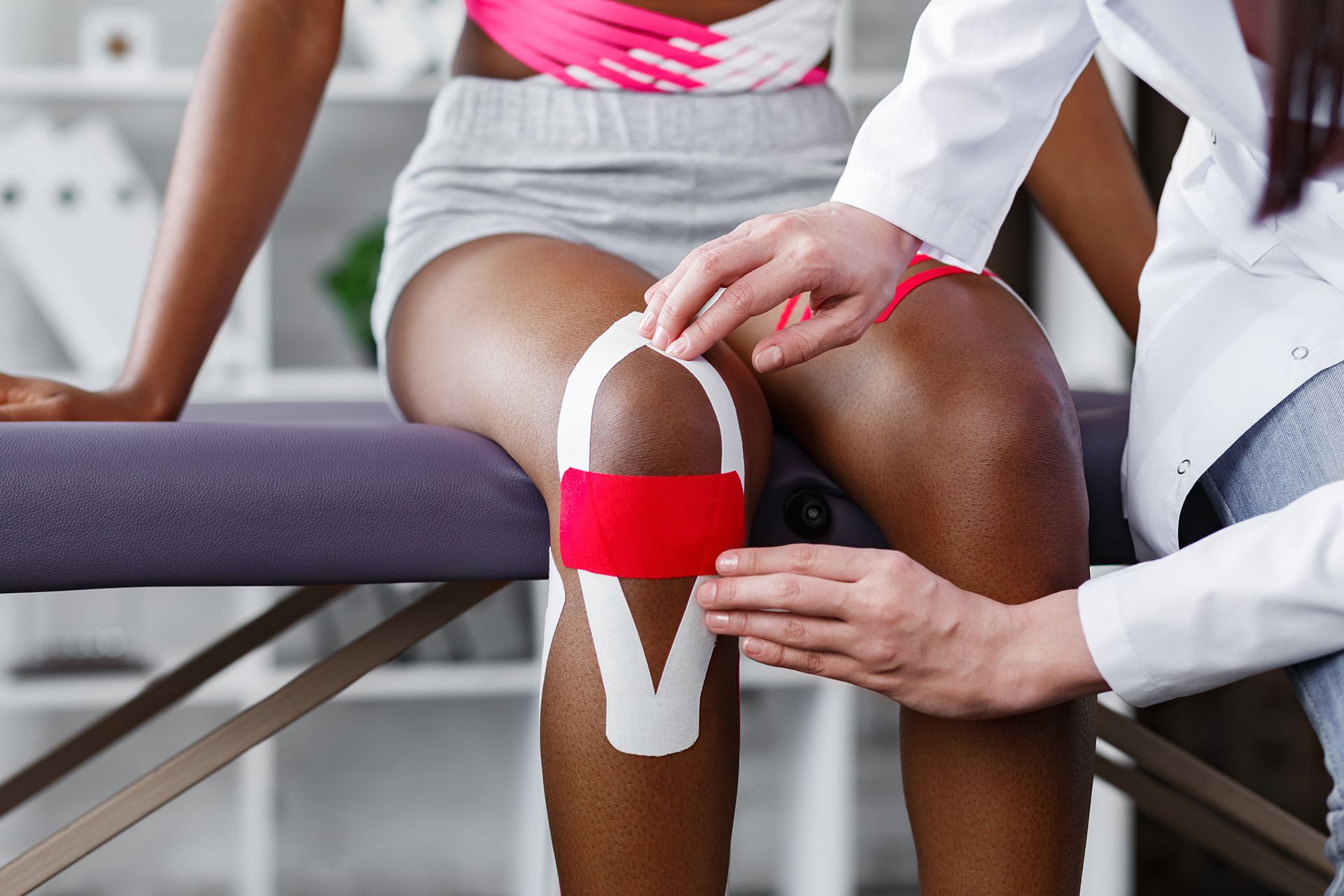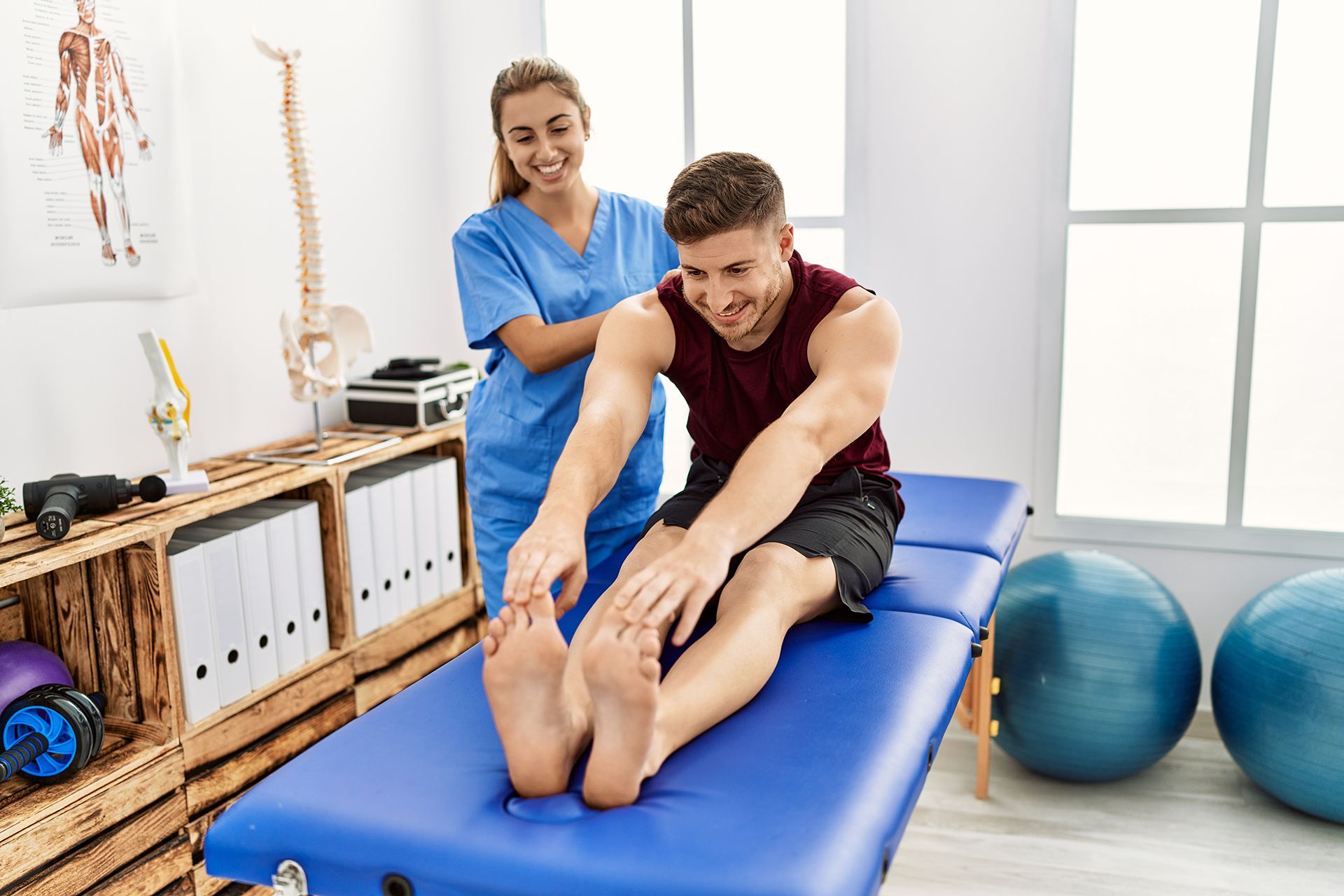Sports injuries can occur in athletes of all levels—from weekend joggers to competitive professionals. At the office of Lynn B. Pownall DC, DACNB in Jamestown, NY, chiropractic care for sports-related injuries focuses on restoring joint function, relieving soft tissue tension, and supporting optimal neuromuscular performance. Whether caused by overuse, poor mechanics, or sudden trauma, injuries that go untreated can lead to chronic dysfunction and decreased performance. Chiropractic care plays a vital role in both recovery and prevention.
Understanding the Nature of Sports Injuries
Athletic activity places high physical demands on the body. Repetitive motions, abrupt direction changes, impact forces, and fatigue can all increase the risk of musculoskeletal damage. Sports injuries commonly affect the spine and extremities, often involving sprains, strains, joint misalignments, and nerve irritation.
Acute Injuries
Acute sports injuries happen suddenly and often result from direct impact, twisting motions, or improper landings. These may include ankle sprains, shoulder dislocations, or lower back strain. Chiropractic care targets the structural changes and compensatory patterns that follow trauma, supporting tissue healing and joint rebalancing.
Overuse and Repetitive Stress
Many athletes experience chronic discomfort due to repetitive strain on muscles, tendons, and joints. This includes injuries like runner’s knee, tennis elbow, rotator cuff tendinopathy, and shin splints. Chiropractic care helps identify and correct biomechanical contributors to overuse injuries, often allowing athletes to maintain their activity levels with fewer interruptions.
Common Sports Injuries Treated
Shoulder and Rotator Cuff Injuries
Throwing sports, swimming, and weightlifting frequently result in shoulder dysfunction. When the rotator cuff or surrounding muscles become strained or imbalanced, it can limit range of motion and cause inflammation. Chiropractic treatment focuses on restoring proper alignment in the shoulder joint and relieving tension in the supporting musculature.
Knee Pain and Patellofemoral Dysfunction
Chronic knee pain is often related to improper mechanics at the hip, ankle, or pelvis. Misalignment in these areas may affect how forces are transmitted through the leg, leading to stress on the knee joint. Chiropractic adjustments to the pelvis, lower extremities, and spine help improve alignment and offload pressure from the knee.
Lower Back Injuries
Back pain is common among athletes involved in contact sports, running, or activities that involve repetitive bending or rotation. Lumbar strain, disc irritation, and sacroiliac joint dysfunction can limit performance and mobility. Spinal adjustments and core stabilization training are used to address these conditions and reduce reinjury risk.
Ankle and Foot Dysfunction
Athletes are especially vulnerable to ankle sprains, Achilles tendon injuries, and plantar fasciitis. Improper foot biomechanics can affect gait and overall movement efficiency. Chiropractic care for the feet and ankles includes joint manipulation, muscle release, and gait correction strategies.
Chiropractic Assessment and Functional Analysis
Every athlete receives a thorough musculoskeletal and neurological evaluation to determine the extent of their injury. Dr. Pownall examines spinal alignment, joint function, muscle tone, and motor coordination. She also analyzes movement patterns that may predispose the patient to repetitive injury or poor recovery.
As a board-certified chiropractic neurologist (DACNB), Dr. Pownall integrates functional neurological testing into her evaluation. This includes balance assessments, reflex testing, eye movement analysis, and sensory input evaluation—all of which play critical roles in athletic performance and injury prevention.
Treatment Approach for Sports Injuries
Spinal and Extremity Adjustments
Proper alignment is essential for efficient movement and joint stability. Dr. Pownall uses manual adjustments to realign affected joints in the spine, shoulders, hips, knees, and ankles. These adjustments relieve pain, restore joint function, and reduce muscular compensation patterns that develop following injury.
Myofascial and Soft Tissue Therapy
Sports injuries often result in muscle guarding, trigger points, and fascial adhesions. Soft tissue techniques such as myofascial release, active release, and cross-friction massage are used to reduce tension and improve tissue elasticity. These therapies enhance circulation and facilitate recovery in injured areas.
Neuromuscular Reeducation
Athletic recovery also involves retraining the brain and body to move correctly after injury. Dr. Pownall utilizes neurological integration techniques to improve proprioception, coordination, and reflex control. These interventions help restore athletic function while reducing the risk of future injury.
Rehabilitation and Movement Strategies
Once pain has decreased and joint function is restored, athletes receive guidance on corrective exercises tailored to their sport. Rehabilitation may include core stabilization, mobility training, balance drills, and movement retraining. These exercises support long-term joint health and athletic performance.
Return-to-Play Support and Performance Maintenance
Injury prevention is an ongoing goal in sports chiropractic care. Athletes under regular chiropractic supervision often report faster recovery, improved flexibility, and more balanced performance. Dr. Pownall provides education on pre-event preparation, post-event recovery, and long-term biomechanical support to keep athletes functioning at their best.
Sports Chiropractic Care in Jamestown, NY
Athletes in Jamestown, NY seeking treatment for injuries or performance enhancement benefit from the expertise of Lynn B. Pownall DC, DACNB. Her integrated approach combines spinal care, extremity adjustments, neurological insight, and functional training to address sports injuries at their source. Whether recovering from acute trauma or managing a chronic overuse condition, patients receive targeted care that supports movement, recovery, and resilience.




